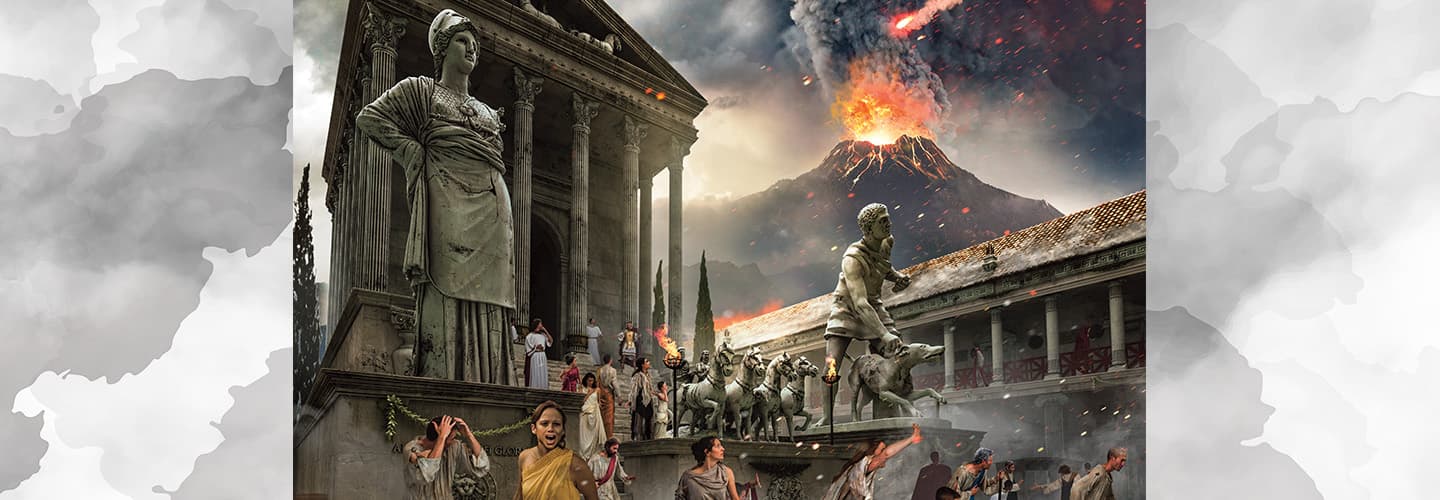Jim McMahon/Mapman®
Pompeii (pahm-PAY) was once a busy city in what is now Southern Italy. Then one day in the year 79 A.D., everything changed. A nearby volcano called Mount Vesuvius (veh-SOO-vee-uhs) suddenly roared to life. A giant cloud of ash, stones, and toxic gases exploded into the sky. Thousands of people ran for their lives.
Within 24 hours, the city was swallowed by a deadly mixture of hot gases, ash, and rocks. When the ash cooled, it hardened like concrete. Pompeii was buried—lost without a trace for centuries.
Fast-forward to 1748. That’s when archaeologists began to dig up the ruins of Pompeii. They were amazed to find that the ash that buried Pompeii also preserved the city. It was like finding buried treasure.
The excavation has slowly continued for more than 250 years. Homes, shops, and hundreds of artifacts have been uncovered in almost perfect condition. New discoveries continue to provide clues about Pompeii and its people.
Pompeii (pahm-PAY) was once a busy city. It was located in what is now Southern Italy. But everything changed in one day. It was in the year 79 A.D. A nearby volcano called Mount Vesuvius (veh-SOO-vee-uhs) suddenly roared to life. A giant cloud of ash, stones, and toxic gases exploded into the sky. Thousands of people ran for their lives.
Within 24 hours, the city was swallowed by a deadly mixture of hot gases, ash, and rocks. When the ash cooled, it hardened like concrete. Pompeii was buried. It was lost without a trace for centuries.
Fast-forward to 1748. That’s when archaeologists began to dig up the ruins of Pompeii. They were amazed at what they found. The ash that buried Pompeii also preserved the city. It was like finding buried treasure.
The excavation has slowly continued. It has been going on for more than 250 years. Homes, shops, and hundreds of artifacts have been uncovered. They’re in almost perfect condition. New discoveries continue to provide clues about Pompeii and its people.

